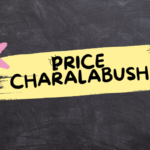A corsage, originally used to complete formal occasions and official functions, is a miniature bouquet used as an ornament. It’s completely unique because it adds sophistication and a form of romanticism to any kind of clothing. Regardless where it is being used – prom, a wedding or other important occasion, the corsage is still popular today. Collared in this article, are fundamentals concerning the history, classifications, functions, and basic guidelines of selecting and wearing a corsage as a endearing floral ornament.
The History of the Corsage
Wearing of flowers has been in practice for many centuries and is used in many different countries. The word corsage is derived from French which translates to bouquet de corsage, which is a bouquets made of flowers pinned to the bodice of a dress. Here’s a brief look at its evolution:
Ancient Times
Greece and Rome: During the actual worship services or ceremonies, some flowers were used in headdresses, necklaces, and other ornaments and it is true Corsages flowers are related to fertility, love and Guardian against evil spirit.
Victorian Era: Flower attaching was also a symbol of fashion and the meaning that was associated with each flower was derived according to floriography.
Modern Era
Aside from the early formality of the late 18th century, corsages became linked with royal dinners, balls, and other such functions in the 19th century; fast forward to the Twentieth century and corsages are related with formal dances, weddings and other events.
Types of Corsages
Nowadays, flowers used in form of corsages are presented between lovers and friends as symbols of love and appreciation of one another and are designed in the modern fashion.
1. Pin-On Corsage
Corsages and boutonnieres have different designs to ascertain they fit a certain event or the personal styles of the individuals who are wearing them. Here are the most common types:
2. Wrist Corsage
Aside from the early formality of the late 18th century, corsages became linked with royal dinners, balls, and other such functions in the 19th century; fast forward to the Twentieth century and corsages are related with formal dances, weddings and other events.
3. Shoulder Corsage
Nowadays, flowers used in form of Corsages are presented between lovers and friends as symbols of love and appreciation of one another and are designed in the modern fashion.
4. Hair Corsage
Corsages and boutonnieres have different designs to ascertain they fit a certain event or the personal styles of the individuals who are wearing them. Here are the most common types:
5. Boutonniere
Although it differs in design, the boutonniere is the equivalent of a corsage; worn on the lapel of a tux or suit.
Choosing the Perfect Corsage
Choosing of the appropriate corsage depends on the event, appropriate dress code, and taste of the person worn it. Here are some tips:
1. Match the Event
Prom: Choose designs that are bright and youthful these should correspond to the color of the dress worn during proms.
Weddings: When selecting top organs pop soft romantic colors that fit the wedding theme.
Mother’s Day: Traditional flowers such as rose and lily arrangements make good presents.
2. Coordinate with the Outfit
It is suggested that identity, texture, and design of the attenuated should harmonize with that of the corsage without overwhelming it.
For darker clothing, the bright flowers look good contrasting with their dull colours and for light clothing, pastel corsages look best.
2. Coordinate with the Outfit
Annual flowers are not only fresh but are cheaper and better for the environment when compared to the purchase of flowers the whole year round.
For events in the spring, daisy or tulips are favorable while in winter, poinsettia or evergreens are perfect for the occasion.
3. Consider the Season
Another option is to add the wearers favorite flowers or color to make the outfit all the more personal.
This can further be augmented with some strings of ribbons or pearls or even some stones in rhinestones.
4. Personalize the Corsage
Add person’s favourite flowers or colour for a personal touch There are various ways of incorporating personal touches in ones clothing they include
Three – to add some extra finishing touches such as ribbons, pearls or rhinestones on the design.
Significance of Corsages
Corsages, as it will be discussed in this paper also has sentimental value, which implies emotions or relations. Here are some common interpretations:
1. Love and Affection
Presenting a corsage is a form of a gift that is usually extended in form of a love token between two lovers or a family member.
2. Gratitude
Corsages most of the times are offered with a purpose of appreciation especially during special occasions like dinners.
3. Celebration
Pinning a corsage signals that a day is special and hints at this in an aesthetic way.
4. Tradition
Corsages are part and parcel of traditional traditions today, ethnicity is brought from the present to the past.
How to Wear a Corsage
The placement of corsage also matters in increasing it beauty and comfort when worn appropriately. Here’s how:
1. Pin-On Corsages
The corsage should be pinned on the left side part of the outfit.
Screw it in to make sure it will not pull on the fabric and is kept in place by a pin.
2. Wrist Corsages
Place the corsage to the wrist side of the smaller hand that is opposite the more frequently used hand in activities.
3. Hair Corsages
Shrink some elastic and wear it around your head to secure it tight with comfort.
4. Avoid Overcrowding
Fix it properly with bobby pins or clip so that it did not move throughout the occasion.
The corsage is the star of this look, so best keep other accessories at a minimum.
Caring for a Corsage
To maintain the freshness and beauty of your corsage:
Store Properly: It is advised to store corsage in a cool area, such as refrigerator if possible, until time of use.
Mist with Water: After that management could water the flowers lightly without drenching them through this formula f = W.
Handle Gently: Do not drag or twist the flowers during the delivery and do not crush or fold them whenever you are using them.
DIY Corsages
Creating your own corsage can be a fun and cost-effective way to personalize this accessory. Corsages Here’s a simple guide:
Materials Needed
- Fresh flowers and greenery
- Floral tape and wire
- Ribbon or bracelet
- Scissors
Steps
Choose Flowers: Chose flowers and greens appropriate for the occasion and the dressing code.
Prepare Stems: Remove the stems and to increase steadiness encircle the stems with floral wire.
Arrange: Arrange flowers and greenery in a manner look good.
Secure: After, tightly secure the arrangement with the floral tape.
Attach: Transform it into a corsage by using the ribbon or a bracelet.
Conclusion
The corsage stays to this day a classic symbol of sophistication and festivity and people adore them to pieces. Whether you are giving, wearing, or even making a, knowing its background heightens the knowledge of this wonderful tradition. If chosen wisely and preserved meticulously, corsage might add the touch of likable angle to any event and turn it into a joy and pleasure.











